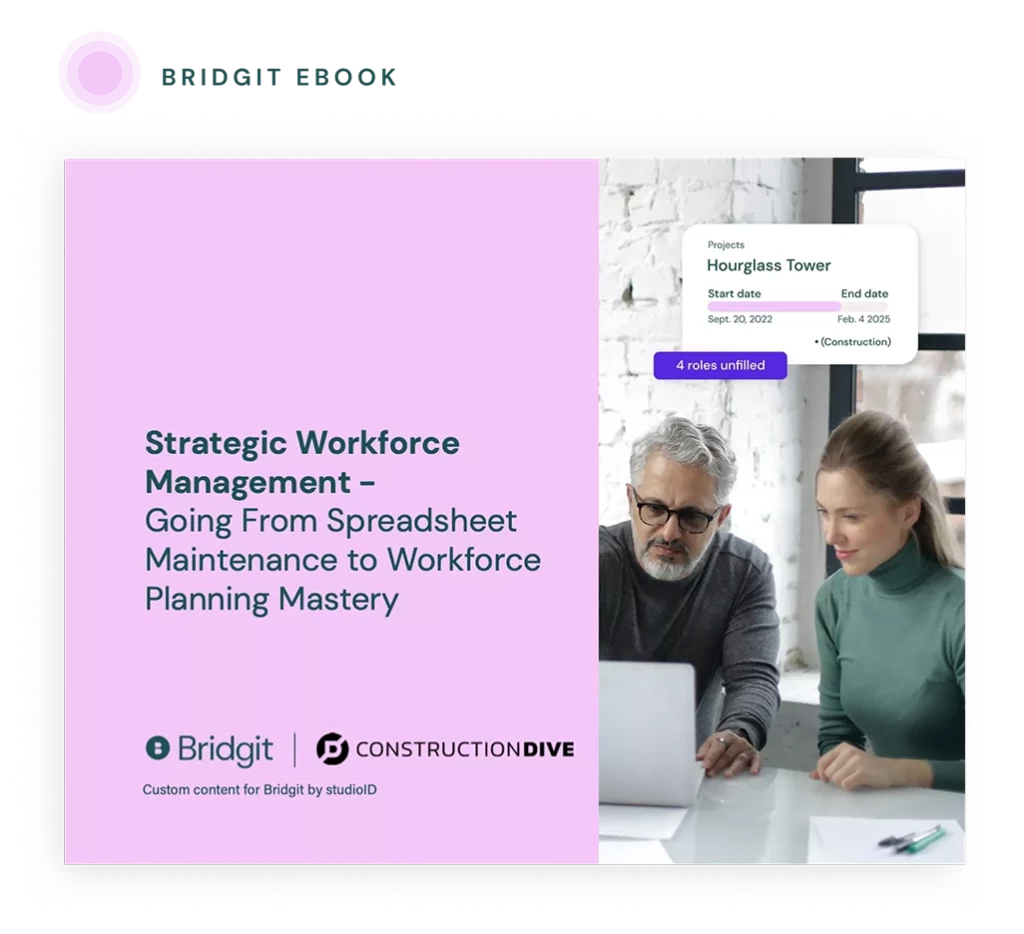If you’re a construction business struggling with skilled labor, you’re not alone. Many companies have difficulty navigating the complexities involved with ensuring their workforce is properly trained for various types of construction projects.
Table of Contents
In this blog post, we’ll explore exactly what constitutes construction skilled labor. We’ll also look at why employing skilled laborers over unskilled workers may make good business sense. So if you’re looking to understand more about skilled labor in construction and its importance for workplace success, read on.
What is construction skilled labor, and what do they do on a job site?
Skilled labor in construction includes professionals who have specialized knowledge and expertise in specific areas of the industry. This includes:
- Electricians
- Plumbers
- Carpenters
- Heavy equipment operators
- Welders
- Other tradespeople
These skilled construction workers are usually expected to complete complex tasks on a job site that require precise measurements, attention to detail, and an understanding of building code regulations.
In general, skilled laborers on construction sites perform a wide range of tasks, from laying out the initial framework to performing final inspections. They are also responsible for installing, repairing, and maintaining:
- Piping systems
- Electrical wiring
- Insulation
- Heating and cooling systems
- Appliances
- Fixtures
In addition to performing these tasks accurately and safely, skilled construction workers are also expected to ensure that all safety regulations are followed on the job site while understanding local building codes and regulations so the job is properly executed.
They’re also expected to be able to read and interpret blueprints, diagrams, and other documents related to their construction project.
Another often overlooked responsibility is the need to collaborate and communicate with other construction professionals and skilled trades on the job site to ensure that all the necessary components are in place for a successful project.

Looking to be more strategic with your people?
We partnered with Construction Dive to outline the steps any contractor can take to be more strategic with their workforce management.
The benefits of having construction skilled labor
Having skilled laborers on a construction project has numerous benefits.
They bring specialized knowledge and experience that may be difficult to find among unskilled workers. This expertise allows them to work faster and more efficiently while ensuring accuracy in their work, increasing productivity. This effectively maximizes output and increases the chances of successful project completion.
Having experienced workers on the job site can also help reduce the risk of costly mistakes and delays. Skilled workers understand the importance of adhering to safety protocols and regulations, which can help reduce liability for both the company and its employees.
Finding qualified skilled labor for a construction project
Finding qualified skilled labor for a construction project through solicited bids can be a daunting task, especially with labor shortages ever-present that create a lack of skilled labor in construction. Fortunately, employers and contractors looking to hire experienced workers can streamline the process in several ways. This may include:
- Word of mouth: An effective way of finding skilled laborers is through word of mouth. Ask other professionals in the industry if they know of any qualified workers who may be available for hire.
- Professional networks: Professional networks such as LinkedIn and specialized industry groups are a great way to find experienced professionals in the construction field. Use these networks to connect with potential employees and learn more about their qualifications and experience.
- Professional services: Professional services such as staffing agencies, headhunters, and recruitment companies can also be used to find experienced workers in the construction field. These services are often able to provide detailed information about potential employees and can often match the right candidate to the job.
By utilizing any or all of these options in combination with the traditional job board posting, employers and contractors can increase their chances of finding qualified skilled labour in the construction industry. Doing so will help ensure successful project completion and minimize delays caused by inexperienced workers.
The cost associated with using construction skilled labor and how to save money
The cost of using skilled labor on a construction project can vary depending on its scope and size. Generally speaking, skilled labor costs more than unskilled labor due to the specialized knowledge and experience they bring to the table.
That said, there are several ways employers and contractors can save money when using skilled labor on a project.
For example, they can opt for a hybrid model where they hire skilled labor as needed and supplement with unskilled labor when necessary. This will help reduce costs while ensuring the job is completed correctly and efficiently.
Employers can go a step further by streamlining their processes. For instance, they might create detailed plans for each job and break them down into smaller tasks that can be completed by unskilled workers. This can help reduce the amount of time required from skilled workers, which will result in lower labor costs.
Manage your workers better with Bridgit Bench
Skilled labor is an essential part of any construction project, as it helps ensure quality results and maximized output. Finding qualified skilled labor for a construction project can be challenging, but with the right effort and resources, employers and contractors can successfully locate experienced workers who are up to the task.
They should also look for ways to reduce costs associated with using skilled labor. Doing so will help them complete their projects in a timely manner while keeping expenses at a minimum.
Think your workforce planning meetings could be more productive?
Download our ebook to learn how to run efficient, effective workforce planning meetings with your team.
Ultimately, utilizing the right resources and making smart decisions regarding labor can help employers and contractors up the success rates of their construction projects. Once you’ve hired the right people, you’ll need to properly oversee them. Technological solutions have been developed to help with managing labor.
Bridgit Bench, for example, lets you manage construction personnel through an organizational dashboard that allows for easy tracking. Request a demo with Bridgit today.
Frequently Asked Questions
What are the 4 types of labor?
The four types of labor are skilled labor, unskilled labor, semi-skilled labor, and professional labor. These categories reflect varying levels of education, training, and expertise required for different jobs.
What category is a skilled worker?
A skilled worker falls under the category of skilled labor. These individuals have specialized training and experience in a specific trade, such as electricians, plumbers, or carpenters.
What is the difference between skilled and semi-skilled labor?
Skilled labor requires extensive training and expertise in a specific trade, often involving certifications or apprenticeships. Semi-skilled labor requires some training and experience but not to the extent of skilled labor, often involving tasks that need limited judgment or supervision.
How does skilled labor differ from professional labor?
Skilled labor involves practical, hands-on work in specific trades, while professional labor requires advanced education and theoretical knowledge, often in fields like law, medicine, or engineering.
What is an example of a skilled profession?
An example of a skilled profession is an electrician. Electricians undergo extensive training and apprenticeships to gain the knowledge and skills necessary to install, maintain, and repair electrical systems safely and efficiently.
What does a skilled laborer do?
Skilled laborers perform tasks that require specialized knowledge and expertise, such as installing electrical systems, plumbing, carpentry, or operating heavy machinery. They ensure work is done accurately and according to safety regulations.
What are unskilled trades?
Unskilled trades involve jobs that do not require specialized training or formal education, such as general laborers, cleaners, or manual material handlers. These roles typically involve basic, repetitive tasks.
Is a construction worker skilled or unskilled?
A construction worker can be either skilled or unskilled, depending on their role. Skilled construction workers include electricians, plumbers, and carpenters, while unskilled workers perform general labor tasks that do not require specialized training.
What do jobs in the skilled labor category require?
Jobs in the skilled labor category require specialized training, often through apprenticeships, vocational schools, or certification programs. They also demand experience, attention to detail, and adherence to safety standards.
How do people become skilled labor?
People become skilled laborers by completing training programs, apprenticeships, or vocational courses in their specific trade. This education provides the necessary skills and knowledge, often supplemented by on-the-job experience.



